|
|
Creator | Title | Description | Subject | Date |
| 26 |
 |
Maloney, Thomas N. | Higher places in the industrial machinery?: tight labor markets and occupational advancement by black males in the 1910s | The economic history of African American workers since 1940 has been marked by alternating episodes of progress and stagnation. Sharp gains in relative incomes during the 1940s were followed by little change in this measure in the 1950s. Renewed progress from the mid-1960s to the mid-1970s was follo... | Black people; Job opportunities; Labor market | 2005 |
| 27 |
 |
Jameson, Kenneth P. | In-migration experience of Indiana's standard metropolitan statistical areas | THE 1970 Census, Fourth Count on Population, can be used to develop a very detailed description of in-migration patterns.1 The main results of such a description for the ten Indiana Standard Metropolitan Statistical Areas (SMSA's) can be summarized as follows.2 | In-migration | 1974 |
| 28 |
 |
Jameson, Kenneth P. | Institutions and development: what a difference geography and time make | Ha-Joon Chang, in his article ?Institutions and Economic Development: Theory, Policy, and History?, provides a description and critique of the mainstream view of institutions and development. It applies well to Latin America in the 1980s and 1990s. However, the effort to introduce these Anglo-Americ... | | 2011 |
| 29 |
 |
Von Arnim, Rudiger Lennart | Labor productivity and energy use in a three sector model: an application to Egypt | This paper presents a model of a developing economy with three sectors| industry, agriculture, and energy. Industry and energy are assumed to be demand- constrained, but agriculture supply-constrained. The model highlights (a) structural transformation, through labor transfer from agriculture to in... | | 2010 |
| 30 |
 |
Maloney, Thomas N. | Living standards in black and white: evidence from the heights of Ohio prison inmates, 1829-1913 | The use of height data to measure living standards is now a well-established method in the economic history literature. Moreover, a number of core findings are widely agreed upon. There are still some populations, places, and times, however, for which anthropometric evidence remains limited. One su... | Stature, Inequality, Nineteenth century US race relations | 2008-07 |
| 31 |
 |
Maloney, Thomas N. | Making the effort: the racial contours of Detroit's labor markets, 1920-1940 | In 1940 the Ford Motor Company employed half of the black men in Detroit but only 14 percent of the whites. The authors postulate that black Detroiters were concentrated at Ford because they were excluded from working elsewhere. Those most affected were young married black men. A Ford job was vir... | Automotive workers - Black people; Ford Motor Company | 1995 |
| 32 |
 |
Jameson, Kenneth P. | Measuring the effect of Bi-directional migration remittances on poverty and inequality in Nicaragua | This paper examines the impact of migrants' remittances on poverty and income distribution in Nicaragua. Nicaraguan emigrants are fairly evenly distributed between the United States and Costa Rica. Poorer migrants overwhelmingly migrate to Costa Rica; richer migrants favor the United States. This bi... | | 2011-01-01 |
| 33 |
 |
Maloney, Thomas N. | Occupation and fertility on the frontier: Evidence from the state of Utah | BACKGROUND Most of what we know about fertility decline in the United States comes from aggregate (often state or county level) data sources. It is difficult to identify variation in fertility change across socio-economic classes in such data, although understanding such variation would provide deep... | | 2014-01-01 |
| 34 |
 |
Maloney, Thomas N. | Personnel policy, costs of experimentation, and racial inequality in the Pre-World War II North | Between 1910 and 1940, the black population of the northern United States nearly tripled, rising from just over I million to more than 2.7 million, signaling the start of the "Great Migration" of African-Americans out of the South. As black workers entered the North, they sought positions in new sec... | Race bias; Personnel policies; African Americans; Employment opportunities | 1999 |
| 35 |
 |
Bilginsoy, Cihan | Prevailing wage regulations and school construction costs: evidence from British Columbia | The stock of public school buildings constructed during the baby boom is aging along with that generation of Americans. Soon much of this building stock will have to be replaced.(FN1) The financing of this rebuilding of America's schools is an emergent political issue of considerable importance. Giv... | | 2000-01-01 |
| 36 |
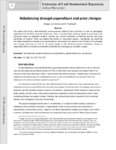 |
Von Arnim, Rudiger Lennart | Rebalancing through expenditure and price changes | This paper puts forth a Neo-Kaleckian open economy model of two countries in order to investigate adjustment of US-China external imbalances. First, a stylized fixed mark-up model is presented, and discussed based on graphical analysis. Second, we present estimates of bilateral income and price elas... | | 2012-12-01 |
| 37 |
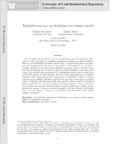 |
Von Arnim, Rudiger Lennart | Redistribution in a neo-Kaleckian two-country model | We investigate the interaction between demand-driven growth and income distribution in open economies, by combining expenditure-switching and demand spillover effects in a neo-Kaleckian two country model. First, we specify elasticities of wage share and real exchange rate to the money wage relative ... | | 2014-01-01 |
| 38 |
 |
Maloney, Thomas N. | Review: Race, liberalism, and economics | Choose any two of these three topics: race, liberalism, and economics. Now trace the connections between the two that you have chosen over the course of the nineteenth and twentieth centuries, incorporating both fundamental philosophical concepts and policy implications. Doing this could easily prod... | Racism; Classical liberalism; Paternalism | 2005 |
| 39 |
 |
Li, Minqi | Rise of China and the demise of the capitalist world-economy: exploring the historical possibilities in the 21st century | China's rising importance in the capitalist world economy raises questions of world-historic significance. How is China's internal social structure likely to evolve as China assumes different positions in the existing world system? Will China's current regime of accumulation survive the potential pr... | World economy; China; Economic development | 2005 |
| 40 |
 |
Li, Minqi | Secular trends, long waves, and the cost of the state: evidence from the long-term movement of the profit rate in the U.S. economy | Theorists in the tradition of either Classical Marxism or Keynesianism understand that as capitalism provides an historical space for the development of material forces of production, its economic and social contradictions tend to develop, requiring progressively more complex institutional structure... | Marxism; Social structures of accumulation; Neoliberalism | 2006 |
| 41 |
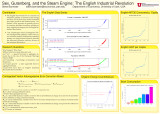 |
Bannister, Stephen Charles | Sex, Gutenberg, and the steam engine: the English industrial revolution | | | 2011 |
| 42 |
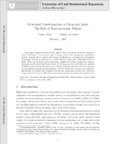 |
Von Arnim, Rudiger Lennart | Structural transformation in China and India: the role of macroeconomic policies | This paper explores macroeconomic policies that can sustain structural change in China and India. A two-sector open-economy model with endogenous productivity growth, demand driven output and income distribution as an important determinant of economic activity is calibrated to a 2000 SAM for China a... | | 2012-01-01 |
| 43 |
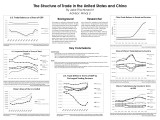 |
Li, Minqi | The structure of trade in the United States and China | | | 2011 |
| 44 |
 |
Jameson, Kenneth P. | Supply side economics: growth versus income distribution | This article discusses the supply-side policies of developing countries and the relationship between growth and income distribution leading to a equitable distribution of income, which have important implications for developed economies. The huge spurs to investment have aided growth but worsened in... | Economic development; Income; Progressive taxation; Developing countries | 1980-11 |
| 45 |
 |
Jameson, Kenneth P. | Supply-side economics: a skeptical view | The current buzzword in Washington--and one presumes in Denver, San Diego, and South Bend as well--is "supply-side economics." Since a significant number of economists seem to be lining up behind its flag, it would be worthwhile to take a hard look at the current rage. | Wealth; Poverty | 1981 |
| 46 |
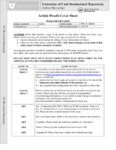 |
Fowles, Richard | Understanding the cell phone effect on vehicle fatalities: a Bayesian view | This article examines the potential effect of various factors on motor vehicle fatality rates using a rich set of panel data and classical regression analysis combined with Bayesian Extreme Bounds Analysis, Bayesian Model Averaging and Stochastic Search Variable Selection procedures. The variables e... | | 2012-01-01 |
| 47 |
 |
Maloney, Thomas N. | Wage compression and wage inequality between black and white males in the United States, 1940-1960 | The gap between the mean wages of black men and white men in the United States narrowed substantially between 1940 and 1950. There was, however, almost no change in this wage gap between 1950 and 1960. Some of this discontinuity in the path of black progress can be explained by general changes in th... | Salaries; Race; Compensation | 1994-06 |
| 48 |
 |
Von Arnim, Rudiger Lennart | Wage policy in an open economy kalecki-kaldor model: a simulation study | This paper discusses a Post?Keynesian model of income, production, and trade. The one?country, one?sector model features Kaleckian investment demand, Kaldorian productivity and a labor market module based on a wage?price spiral. The model is first presented for a closed economy with exogenous real w... | | 2010 |























